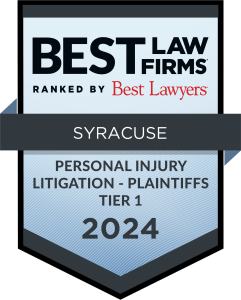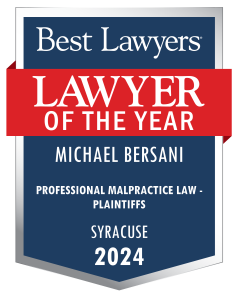

As the year draws to an end, I am filled with gratitude for another year of high achievement for our small but powerful personal injury law firm, Michaels Bersani Kalabanka, P.C, based in of Auburn, New York. We have once again achieved “First Tier” ranking from the publication U.S. News & World Report and Best Lawyers in America®. And not just in the category of “personal injury”, but also “products liability” and “professional malpractice”.
Not only that, U.S. News & World Report and Best Lawyers in America® named Michael Bersani, for the third time in the last five years, “Lawyer of the Year” for the Syracuse area. This year, it was for representing victims of professional malpractice.
These awards mean our clients could not be better represented. May the New Year continue to bring them, and us, success.
 Central New York Injury Lawyer Blog
Central New York Injury Lawyer Blog





